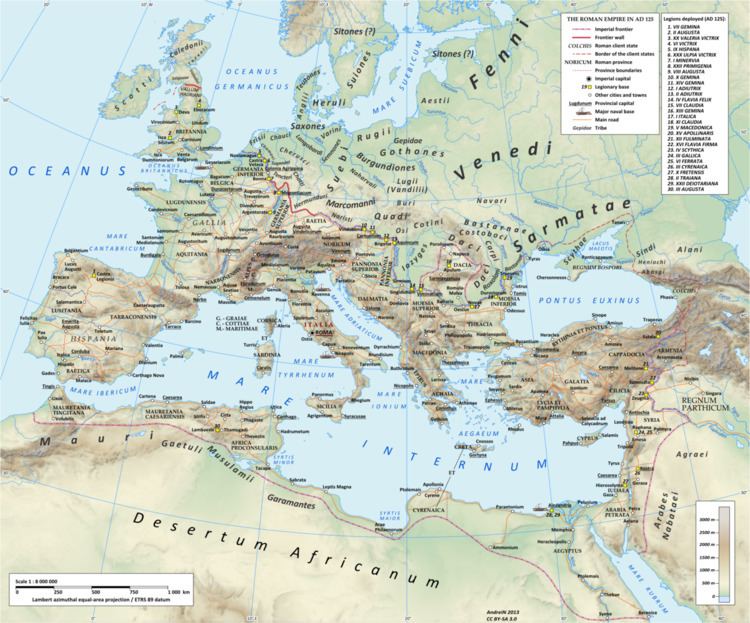 | ||
Active 41 BC to after 2nd century Role Infantry assault (some cavalry support) Size Varied over unit lifetime. | ||
Legio sexta victrix ("Victorious Sixth Legion") was a legion of the Imperial Roman army founded in 41 BC by the general Octavian (later known as the emperor Augustus). It was the twin legion of VI Ferrata and perhaps held veterans of that legion, and some soldiers kept to the traditions of the Caesarian legion.
Contents
In Republican Service
The legion saw its first action in Perusia in 41 BC. It also served against the Sextus Pompeius, who occupied Sicily and made threats to discontinue sending grain to Rome. In 31 BC the legion fought in the Battle of Actium against Mark Antony.
VI Victrix in Spain
The legion took part in the final stage of the Roman conquest of Hispania, participating in Augustus' major war against the Cantabrians, from 29 BC to 19 BC, that brought all of the Iberian Peninsula under Roman rule.
The legion stayed in Spain for nearly a century and received the surname Hispaniensis, founding the city of Legio (modern-day León). Soldiers of this unit and X Gemina numbered among the first settlers of Caesaraugusta, what became modern-day Zaragoza. The cognomen Victrix (Victorious) dates back to the reign of Nero. But Nero was unpopular in the area, and when the governor of Hispania Tarraconensis, Servius Sulpicius Galba, said he wished to overthrow Nero, the legion supported him and he was proclaimed Emperor in the VI Victrix legionary camp. Galba created VII Gemina and marched on Rome, where Nero killed himself.
VI Victrix in Britain
In 119, Hadrian relocated the legion to northern Britannia, to assist those legions already present in quelling the resistance there. Victrix was key in securing victory, and would eventually replace the diminished IX Hispana at Eboracum. In 122 the legion started work on Hadrian's Wall which would sustain the peace for two decades.
Twenty years later, they helped construct the Antonine Wall, but it was largely abandoned by 164.
In 175, the Roman emperor, Marcus Aurelius, defeated the Iazyges tribe of Sarmatians. He took them into Roman service and settled 5,500 of them in Britain; some were assigned to the VI Legion Victrix based in York and others are attested in a unit at Ribchester, south of Lancaster.
In 185, the British legions mutinied and put forward a commander of their own, named Priscus, to replace the unpopular Emperor Commodus, but the former declined. The mutiny was suppressed by Pertinax, who would later become emperor himself after Commodus was murdered.
The Legate of the legion in the late second century, Claudius Hieronymianus, dedicated a temple to Serapis in Eboracum in advance of the arrival of Septimius Severus in AD208.
An altar to Hercules was dedicated by Gaius Vitellius Atticianus, Centurion of the Legio VI Victrix, at Whitley Castle (Epiacum).
Commanders
Epigraphic Inscriptions
fieri iussit. York (Eboracum), U.K. RIB 675.
faciendum curavit. London (Londinium), U.K. CIL V 25.
In Popular Culture
The legion is mentioned in Robert Heinlein's novel Have Space Suit - Will Travel. and in the book From Scythia to Camelot By C. Scott Littleton and Linda A. Malcor
Reenactment
A modern reenactment group based in Los Angeles reenacts this legion.
Legio VI Victrix, Eboracum reenacts this legion in York.
